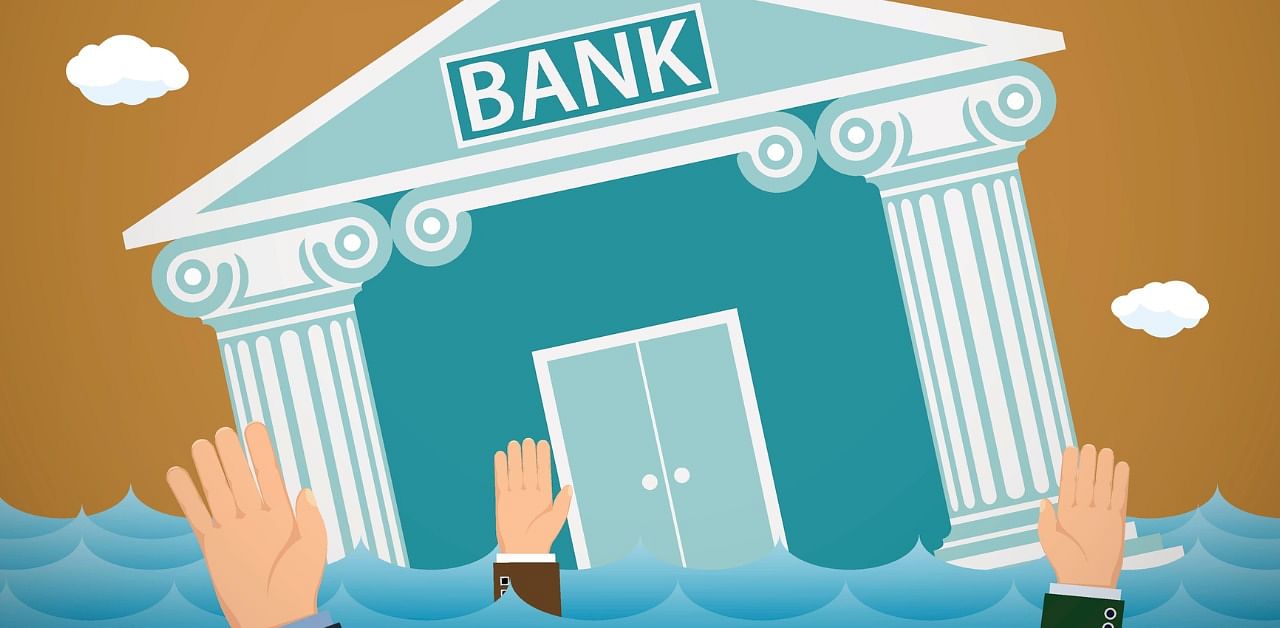
By Andy Mukherjee
After years of trying, making India’s broken banks whole is still very much like pulling teeth. The twists and turns in the $12 billion bankruptcy of a housing finance company shows how challenging it may be for the country to nurse its post-pandemic financial system to health.
The state-dominated lending system’s aggregate balance sheet had a gaping hole even before Covid-19. Now things could turn uglier. The regulator’s latest stress test projects nonperforming assets to jump to 13.5% of loans and advances by September in its baseline scenario, and 14.8% in the worst-case situation, almost doubling from 7.5% a year earlier.
Alarming as they are, the numbers shouldn’t be a surprise. India imposed one of the world’s harshest lockdowns in March and kept it going through much of the second quarter. Even now, the Mumbai suburban railway service — the lifeline of the commercial capital — isn’t fully open to the public. Domestic airline traffic, while picking up, was still down 45% in December from a year earlier. Annual petroleum demand fell for the time in more than two decades last year.
When it comes to India’s banks, the default option is to delay any reckoning of losses. Never mind that this extend-and-pretend strategy has backfired for almost a decade. The official thinking seems to be that the government has done its bit for vulnerable small and midsize firms during the pandemic by guaranteeing fresh bank loans. Borrowers could use the cushion — plus the resources they preserved during a payment reprieve they got from the Reserve Bank of India — to repay creditors.
This benign view is supported by the low take-up rate for the RBI's one-time restructuring offer after the moratorium ended in August. Only $27 billion of requests came through by the Dec. 31 deadline, according to BloombergQuint. Rating firms were expecting debt recast to be four to five times as high.
So the idea, for now, is to not worry too much over the RBI’s stress test and wait for a V-shaped recovery in operating cash flows. If it doesn’t materialize, non-performing assets will surge. That can always be dealt with later.
But how? Papering over an economy-wide solvency problem by flooding the financial system with cheap liquidity is risky for financial stability, and not something the monetary authority wants to continue indefinitely. Alternatives, however, are scarce because India doesn’t have good tools to deal with insolvency. The 2016 bankruptcy law, heralded as a major reform, was struggling even before the virus outbreak. Liquidation, the outcome in most cases, has led to creditors recovering only 15%, compared with the global average of 80%. Yet the government extended the same regime to failing shadow banks.
Dewan Housing Finance Corp., a mortgage lender whose controlling shareholders are currently in judicial custody on charges of accounting fraud and misappropriation of funds, became the first non-bank financier to enter an in-court bankruptcy process with an RBI-appointed administrator at its helm. That was in November 2019. Only this week will creditors get to vote on who they’ll sell the company to and recover a part of their $12 billion exposure.
It may not end there. After six rounds of bidding, which left the suitors groaning about how shabbily the process was being run, two front-runners are the distressed-debt guru Howard Marks’s Oaktree Capital Group and a financial services firm controlled by Indian billionaire Ajay Piramal. Oaktree says its plan gives creditors 388.2 billion rupees ($5.3 billion). That, it says, is $600 million more than Piramal Enterprises Ltd.’s bid, but only if lenders believe Oaktree’s assumptions. Not only is Piramal challenging them, it’s also asking how Oaktree can sweeten its offer after the bids had already been opened to reveal that the Indian contender was ahead.
The way the acrimonious contest is shaping up, it’s certain that whichever buyer the creditors select, the other party — or India’s Adani Group, which is also in the running — will mount a lengthy legal challenge. Every month of delay will cost creditors.
Oaktree’s Jan. 6 letter to creditors says their vote will “define the reputation” of India’s bankruptcy code in global markets. But international standing will be a byproduct of a fair, rules-based bidding process that holds up to domestic legal scrutiny and minimizes contagion risk. With Indian banks’ exposure to shadow financiers increasing, it’s critical to establish a template that can be used for swift resolution in the future.
Clearly, the task at hand is much more than filling the hole left by the $2.5 billion alleged fraud by Dewan’s former owners, or giving creditors some money now to make their end-March financial results look better. Lenders have to hang around for years to salvage value. So the goal must be to leave behind a well-capitalized mortgage financier with competent managers. If there are other entities in the bankrupt group — Dewan owns part of an insurance venture — those, too, must find owners acceptable to their regulators.
Much of this is common sense. When that’s given short shrift and the sanctity of deadlines is vitiated, you have to wonder how India will deal with a surge of Covid-19 bankruptcies.